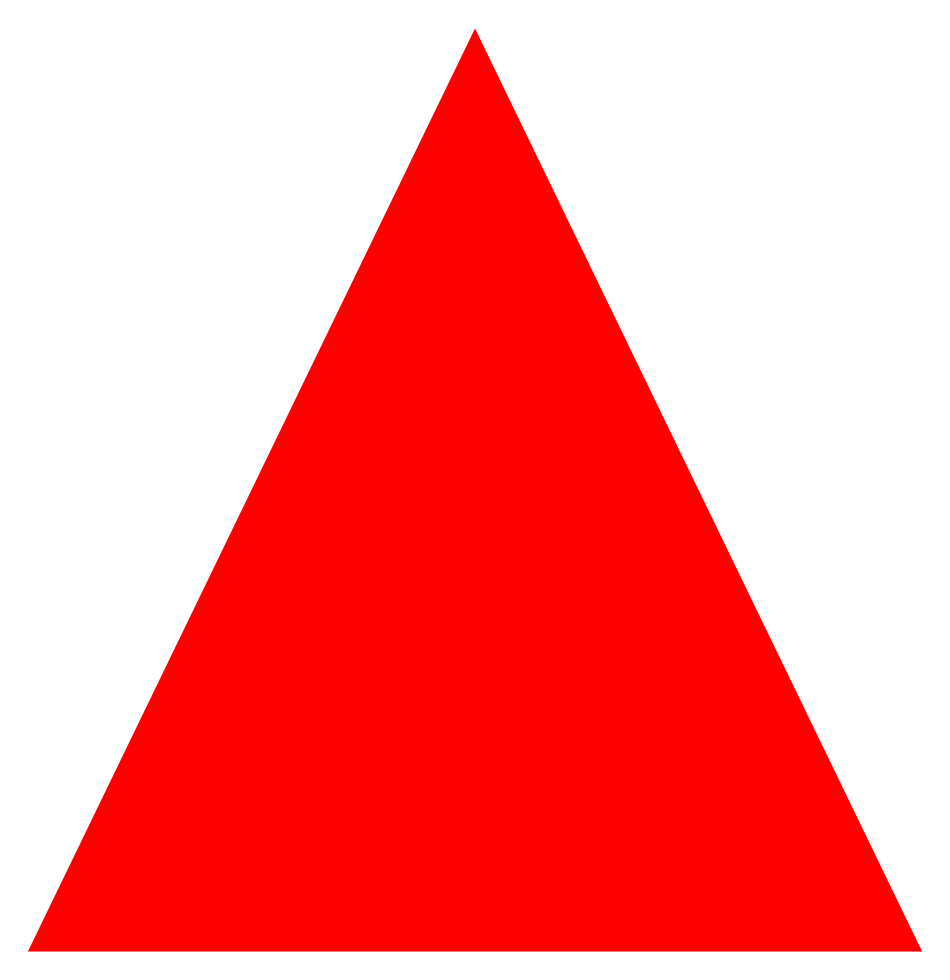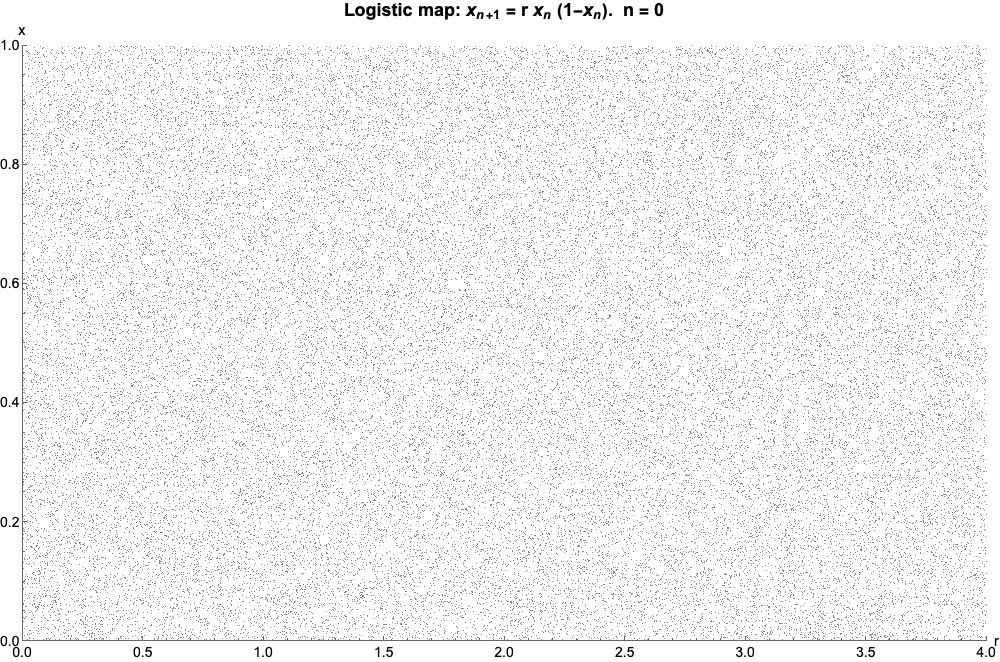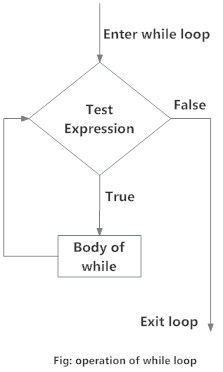More ("MOAR!") Kinds of Loops
einbahnstrasse.github.io/MTEC1003-slides/slides/more.loops.tutorial.v01/MTEC1003 — Media Computation Skills Lab
In this tutorial, we’ll discuss…
While Loops
Self-Similarity
Recursion
…and we’ll be doing so in both
Python AND JavaScript.
So, let’s get started:
For Loop: Reconsidered
So far we’ve learned about the for loop.
Its basic structure fulfills many of our programming tasks:
…For example, step-by-step, repetitive tasks
that may require things like:
counting
iterating
generating
But it’s important to remember…
There are other structures available to us,
for tasks other than iterating, counting, etc.
Imagine:
You have a repetitive task…
But you don’t know in advance how many times to repeat it.
Can we use a for loop to accomplish this?
Recall the basic structure of a for loop, in JavaScript:
for (i = 1; i <= 10; i = i + 1) {
first statement;
second statement;
}What are its 3 components?
The 3 Components of a For Loop:
1. initialization
2. termination condition
3. increment
And how do we code each of these (i.e. in JavaScript)?
1. initialization: i = 1;
2. termination condition: i <= 10;
3. increment: i = i + 1
In this case, the termination condition is definite:
i <= 10;
It tells us: after a known number of iterations,
the loop will stop.
But what if the number of iterations
is not fixed in advance of the loop?
For example,
what if the number of iterations
depends on what the user does each time?
Well, in that case…
We need another kind of loop structure.
Allow me to introduce the…
While Loop
The while loop is also iterative.
So, like the for loop,
we can use both to count and repeat stuff.
But, unlike for loops…
the while loop only repeats itself
while a certain condition is true.
Here’s a flowchart describing how, logically,
a while loop functions:
Think of it this way:
A while loop acts like the combination
of a for loop and a conditional statement.
As long as some condition continues to be true,
the loop keeps repeating…
But as soon as that condition is no longer true,
that is, when the condition becomes false,
the loop immediately stops repeating;
and our program “exits the loop.”
Wait, what?!
Yeah, yeah, I know, you’re only five, got it…
How about a fancy, shmancy example then?
For example, consider this simple,
amazingly stupid while loop in Python:
i = 1
limit = 10
while i <= limit:
print(i)
i = i + 1
# After the loop terminates, print this:
print("i is now greater than ", limit)
As you can imagine,
this while loop produces the following output:
$ python3 /path/to/my/while-loop-script.py
1
2
3
4
5
6
7
8
9
10
i is now greater than 10
$i = 1
limit = 10
while i <= limit:
print(i)
i = i + 1
# After the loop terminates, print this:
print("i is now greater than ", limit)Can you identify the 3 components of this loop?
While Loop: Initialization
# Intitialization:
i = 1
limit = 10At the top, we declare + initialize 2 variables:
the i variable indexes our loop, as normal,
but we also make a limit variable…
Once this counter value has been reached (i.e. 10),
the loop will stop.
While Loop: Increment
Inside the while loop itself:
while i <= limit:
print(i)
i = i + 1We find our usual incremental expression:
i = i + 1Notice that it’s inside the loop (i.e. indented in Python),
meaning it increments each time the loop runs.
Anything missing?
We found the initial and incremental parts…
But where is our termination condition??
While Loop: Termination
Check out the while loop once again:
while i <= limit:
print(i)
i = i + 1Its first line
while i <= limit:includes its own termination condition…
This says to us: Once i is greater than limit, stop.
In other words,
like if and then clauses,
the while clause includes a condition.
As long as that condition continues to be true,
the loop will continue repeating itself.
What would this simple while loop look like
in JavaScript?
Simple While Loop: JavaScript Version
var i = 1;
var limit = 10;
while (i <= limit) {
console.log(i);
i = i + 1;
}
// After the loop terminates, print this:
console.log("i is now greater than " + limit);And what are the differences between this syntax
and the earlier Python version?
Key Differences Compared to Python
Declare all variables with var
Lines end with a semicolon ;
While clause is in parens (i <= limit)
Entire while loop is enclosed in braces {}
Now, maybe you noticed…
that this simple while loop
had a fixed number of iterations (10).
What about that situation I mentioned earlier?
Imagine:
You have a repetitive task…
But you don’t know in advance how many times to repeat it.
Well, we can use a while loop for this too…
Consider this while loop (in Python):
userstring = input("Is MTEC1003 the best class? (y/n) ")
while userstring != "y":
userstring = input("Sorry, I don't understand... Is MTEC1003 the best class? (y/n) ")
print("That's exactly what I was thinking...")
print("I agree! MTEC1003 really IS the best class!")(Scroll to the RIGHT to see the complete line…)
What is going on here?!
First of all…
What does the != operator do?
…Remember?
It means “not equal.”
So the first line of this while loop:
while userstring != "y":which designates a condition,
tells us that the loop will keep repeating
for as long as userstring is not “y”.
Now, look at the whole thing once again:
userstring = input("Is MTEC1003 the best class? (y/n) ")
while userstring != "y":
userstring = input("Sorry, I don't understand... Is MTEC1003 the best class? (y/n) ")
print("That's exactly what I was thinking...")
print("I agree! MTEC1003 really IS the best class!")(Scroll to the RIGHT to see the complete line…)
On line 1, we prompt the user for input.
Inside the while loop we keep prompting the user
if their answer isn’t “correct,”
And once it’s “correct,” the loop terminates,
and we print some final messages.
So, as you can imagine, this while loop
can produce the following output:
$ python3 /path/to/my/while-loop-script.py
Is MTEC1003 the best class? (y/n) n
Sorry, I don't understand... Is MTEC1003 the best class? (y/n) n
Sorry, I don't understand... Is MTEC1003 the best class? (y/n) but i like my other classes...
Sorry, I don't understand... Is MTEC1003 the best class? (y/n) OK I RLY HATE THIS CLASS
Sorry, I don't understand... Is MTEC1003 the best class? (y/n) fine, ok you win
Sorry, I don't understand... Is MTEC1003 the best class? (y/n) y
That's exactly what I was thinking...
I agree! MTEC1003 really IS the best class!
$(Scroll to the RIGHT to see the complete line, including user input…)
Why “can produce” and not “definitely will produce?”
Because the precise output of this while loop
entirely depends on what the user does.
The loop will keep cycling whenever
the user answers something other than “y”.
In other words,
the exact number of iterations
is not fixed in advance.
So, what would this intermediate while loop look like
in JavaScript?
Intermediate While Loop:
JavaScript Version
var userstring = prompt("Is MTEC1003 the best class? (y/n) ");
while (userstring != "y") {
userstring = prompt("Sorry, I don't understand... Is MTEC1003 the best class? (y/n) ");
}
console.log("That's exactly what I was thinking...");
console.log("I agree! MTEC1003 really IS the best class!");(Scroll to the RIGHT to see the complete line…)
Again, what are the differences between this syntax
and the earlier Python version?
Key Differences Compared to Python
Declare all variables with var
Lines end with a semicolon ;
While clause is in parens (userstring != "y")
Entire while loop is enclosed in braces {}
But, when should I use a for loop?
And when should I use a while loop?
For Loop vs. While Loop
For loops repeat a certain number of times.
Use a for loop for simple counting, indexing, generating, reading through the items in a list, etc.
For Loop vs. While Loop
While loops can easily repeat an UNcertain number of times;
that is, until a certain condition is no longer true.
Use a while loop for more complex iterations;
for example, when the number of repetitions depends
on a user’s interaction with your program.
So far we’ve discussed:
for loops
and while loops
Both of these types of loops
have been used to accomplish
what we’ve called iteration.
Which is?
Remember?…
Iteration
To iterate is to execute a sequence of instructions
that is continually repeated. [view source]
We might use an iterative approach
to a problem requiring us to iterate:
a precise number of times, or
until some condition is no longer true, or
through the elements in a list,
until the entire list has been traversed.
But there’s a special kind of “loop” we can use
for processes that are not quite the same on each repetition,
but when each repeated step is similar…
that is, when each repetition is related
in some way to the whole.
Wait, what?!
What are you even talking about?!
Ugh, I know, okay, let me break this down…
How about another fancy, shmancy example?!
For example, this entire structure consists
of continual variations of the same shape:
It’s called a Sierpiński Triangle…
And is constructed by taking a single triangle…

and continually subdividing it into a
potentially infinite number of smaller triangles.
Imagine a loop… Each time that loop repeats itself,
big triangles are subdivided into smaller triangles.
Each cycle through the loop generates results that are
not identical, but curiously similar:
Each time produces multiples of smaller triangles.
This is a property known as
Self-Similarity
meaning…
the WHOLE has approximately the same shape
as its internal, component PARTS.
In the case of the Sierpiński Triangle,
all smaller triangles, and their spatial arrangements,
bear resemblance to all the larger levels of triangles,
and vise versa!
So, why is self-similarity important?
It turns out that nature is full of things
that display this characteristic property…
Like trees…
Or coastlines…
Location: Egypt. Source: Google Earth
Or models of population growth…

So, it’s worth understanding
how self-similar structures work,
and how to “simulate” them in our programs.
Now, back to programming stuff…
Remember: I mentioned a special kind of loop…
that is, for programming repeating sequences
where each step generates results that are similar,
but not identical…
each step relating to the whole…
We call this process…
Recursion
and we invoke Recursion by creating
Recursive Functions
Notice we aren’t calling them “Recursive Loops”…
Although recursive functions definitely
repeat sequences in a very “loop-like” way…
Instead, we define “Recursive Functions”
as functions with a very “loop-like” behavior…
Now, one way to incorrectly do this
would be to embed a for loop within a function:
def foo():
for x in range(0, 5):
print(x)This is close to what we mean by
a function with “loop-like” behavior,
but this still isn’t recursion…
Recursive Functions
are functions that call themselves.
That means, within a function definition,
we also call the function being defined.
By calling the function within its own definition,
we also create a “loop-like” structure…
To understand better,
let’s revisit function definitions and calls…
Function Definition
def foo():
[statement 1]
[statement 2]
return someResultIn Python, we define a function like this, remember?
Function Call
foo()Then we call that function somewhere else in our program.
You know… to execute or to “use” that function.
But, A Recursive Function
def foo():
foo()is a function that calls itself.
Notice this function definition contains its very own call.
Here, the function is defined in terms of itself.
THIS Recursive Function
def foo():
foo()…Well, it’s pretty stupid, actually…
Can you imagine what would happen if we run it?
It would produce an infinite loop calling itself
over and over again…
And eventually it would crash our program!
Why would it crash?
Basically, if a loop keeps cycling forever,
eventually we’ll run out of memory.
So, we need something to stop this loop…
Why would it crash?
Because this recursive function is missing
something very important…
something fundamental to all
recursive functions, which we call a…
Base Case
Base Case
Without a base case, a recursive function
would go on recursing forever…
A base case is used to STOP a recursive function.
Do you remember how we STOP a for loop?
We use a base case to STOP a recursive function
similarly to how a termination condition
is used to STOP a for loop.
In Python, here’s a recursive function with a base case:
def factorial(n):
if n == 1:
return 1
else:
return n * factorial(n-1)This one calculates the factorial of a number.
For example, 3 factorial would be defined as 3!
where n=3 evaluates to 3 x 2 x 1 = 6.
So, how does this crazy thing work?
First, notice that the function calls itself.
def factorial(n):
if n == 1:
return 1
else:
return n * factorial(n-1)On line 1, we define the function factorial(n),
But inside our definition; inside our else statement,
on line 5, the factorial function is called;
with an argument of n-1, or:
1 less than the argument n given in the previous function call.
This means the function factorial will keep calling itself!
Each time, reducing n by a value of 1…
For example, if we were to run factorial(3)
Our function would call itself in this order:
factorial(3)
factorial(2)
factorial(1)
And we obtain our solution: 3 x 2 x 1 = 6
But, how does this function know when to STOP?
How does it know when to stop reducing by 1?
The answer is:
The Base Case
But where is this BASE CASE thing already??
Inside our function definition,
the if clause gives us our base case:
def factorial(n):
if n == 1:
return 1This says: if n is 1, return the value 1, and STOP repeating.
We know it will STOP because inside the else clause,
there is no function call to keep our function looping.
How can we see what’s going on inside the function?
And why is Confused John Travolta
asking all the questions??
To see what happens
each time the function is called internally,
we can add print() statements at each step.
Here, I’ll add 2 print() statements,
one inside the if clause, and another
inside the else clause:
def factorial(n):
if n == 1:
print("n is 1, so return 1 and STOP!")
return 1
else:
print("n is " + str(n) + ", so reduce n and CALL n-1=" + str(n-1))
return n * factorial(n-1)Now, we can monitor what happens at each step…
Now, when we execute this function,
by calling it once inside our Python code:
factorial(3)the output (in the Terminal) will be:
$ python /path/to/my/python/script.py
n is 3, so reduce n and CALL n-1=2
n is 2, so reduce n and CALL n-1=1
n is 1, so return 1 and STOP!
6
$ And we obtain our result: 3 x 2 x 1 = 6.
Each time, n is multiplied by n-1… UNTIL n=1.
Each repeated step is similar to the previous one:
factorial(3) : n=3 : 3
factorial(2) : n-1=2 : 3 x (3-1) = 6
factorial(1) : n-1=1 : 6 x (2-1) = 6
final result returned by our function: 6Each operation is the same, but the input changes…
so, the result we evaluate each time
is not identical… but related.
What would this simple recursive function look like
in JavaScript?
Inside of an HTML file, and between <script> tags,
we could write a JS version of our factorial() function,
which would look like this:
function factorial(n) {
if (n == 1) {
return 1;
} else {
return n * factorial(n-1);
}
}On your own:
How could you add print statements to this?
And, as always,
carefully note the differences in syntax
between Python and JavaScript!
Okay fine, but can you give us more (MOAR!) examples
of recursions and how they work?
For a visual example, watch
this video by Daniel Shiffman:
in which he explains tree branching structures and
writes a recursion in his own JavaScript library: p5.js
You don’t need to know p5.js to understand this video!
For a more intermediate example,
watch this video by Professor Thorsten Altenkirch:
in which he explains the famous Tower of Hanoi problem,
and writes a recursion in Python to solve it!
So… did you watch those videos?
If not, go back and watch them all the way through!
You might very well be quizzed or tested on them…
So, to summarize:
For loops and while loops are both iterative.
A while loop is like a for loop with a conditional statement.
Self-similarity is when parts bear resemblance to the whole.
Recursion is something that’s defined in terms of itself.
A Recursive function includes a call to itself,
producing repetitions that are similar but not identical.
Finally, here are some possible
Discussion Questions
on the remaining slides
Prepare your responses to these questions,
And bring them to class:
Discussion Question #1
What are some situations
when you should you use a for loop?
And how about some situations
when should you’d best use a while loop?
Discussion Question #2
What are some self-similar objects
you’ve encountered in nature?
(…Something not mentioned already in these slides?)
Discussion Question #3
What are some differences between iteration and recursion?
Finé
Now, time to do the labs…
